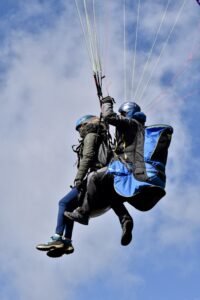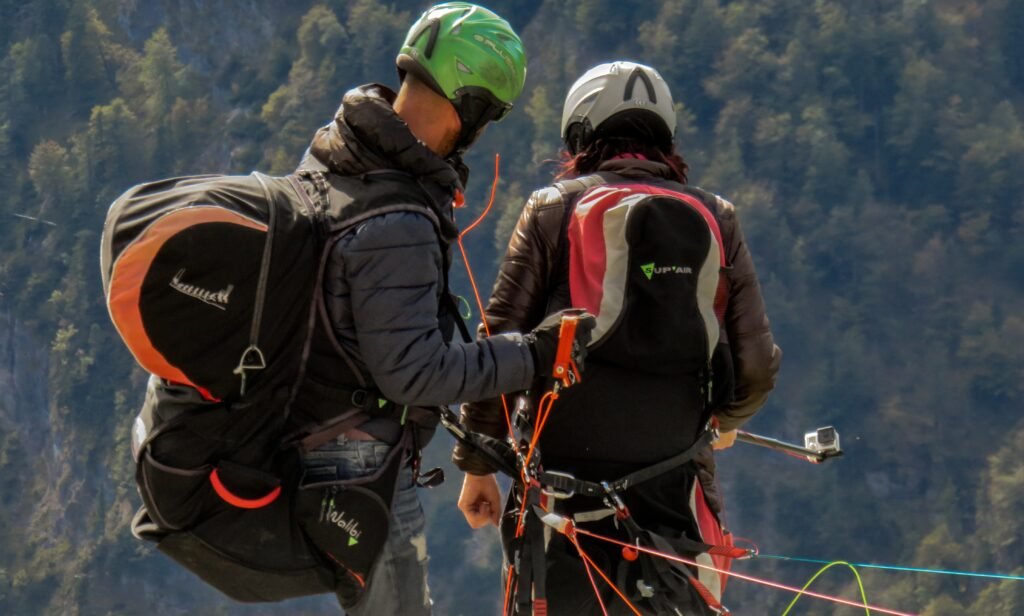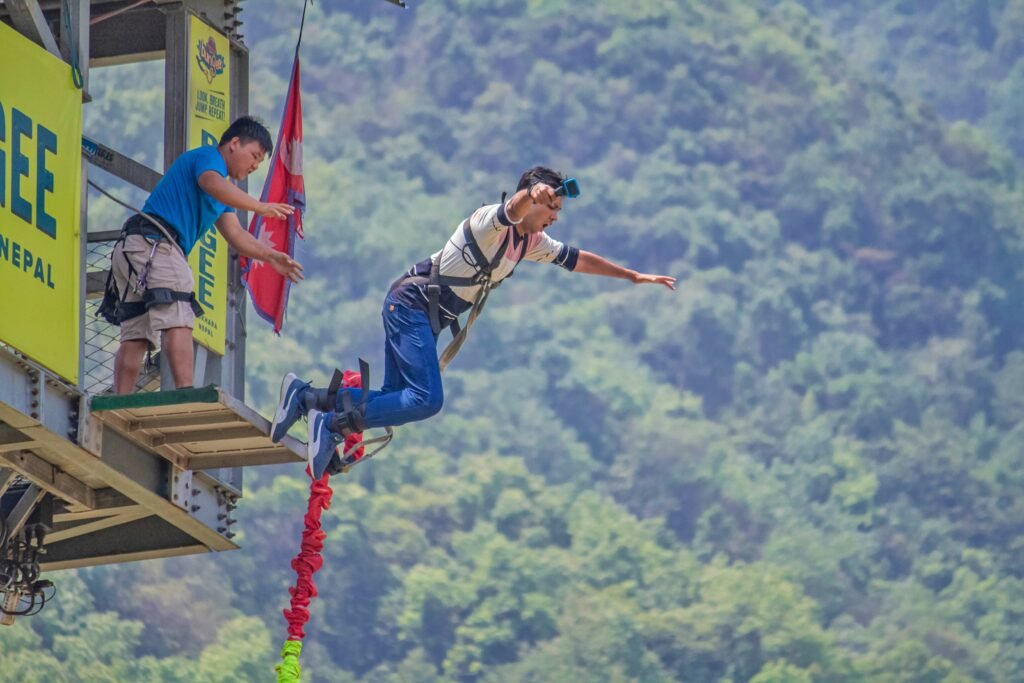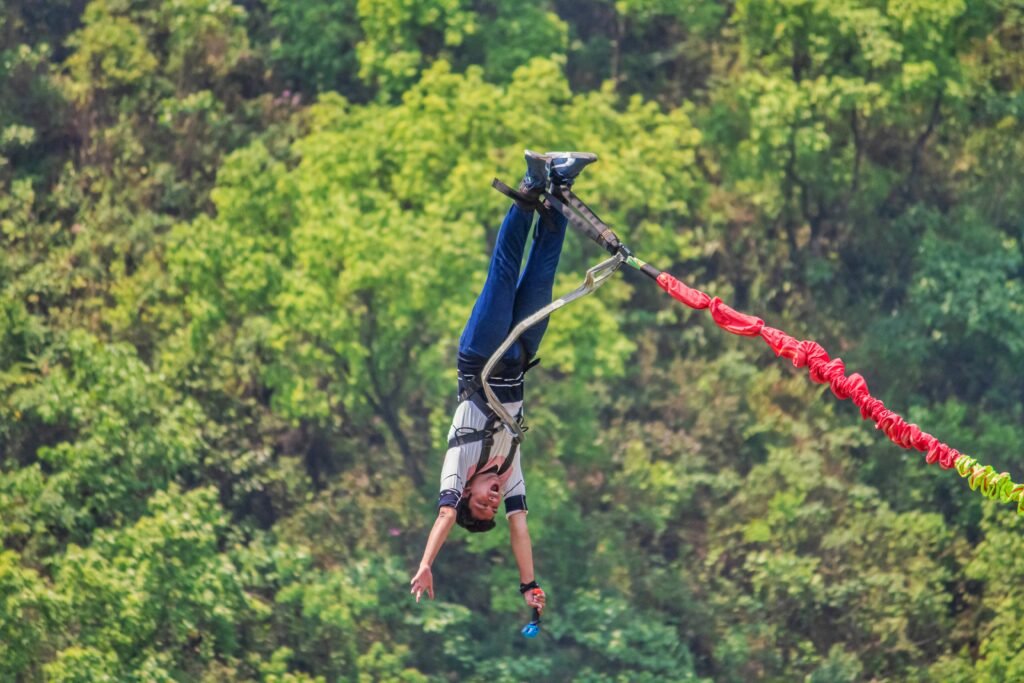Is Paragliding Safe in Nepal? - let's hear the answer
Is Paragliding safe in Nepal? This question commonly prompts into mind when we think about paragliding in Nepal. Nepal’s stunning landscapes, from the towering Himalayan peaks to the verdant valleys below, provide an enchanting backdrop for paragliding adventures. As enthusiasts flock to this Himalayan haven for the thrill of free flight, ensuring the safety of every participant becomes paramount. In this blog post, we’ll explore the safety measures and precautions implemented by paragliding operators in Nepal to ensure a secure and enjoyable experience for all.
Safety and Preparation Tips
- Choose a Reputable Operator: Ensure you book your flight with a licensed and experienced paragliding operator. Check reviews and ratings online to gauge their reputation.
- Understand the Weather Conditions: Weather plays a crucial role in paragliding. Always fly in favorable conditions and be prepared for possible changes in the weather.
- Wear Appropriate Gear: Dress in comfortable, layered clothing, and wear sturdy shoes. Most operators provide helmets and harnesses, but you can bring your own if you prefer.
- Listen to Your Instructor: Pay close attention to the pre-flight briefing and follow your instructor’s guidelines during the flight. This ensures a safe and enjoyable experience.
- Health Precautions: Ensure you are in good health and do not have any medical conditions that could be affected by paragliding. Consult with your doctor if you are unsure.
1. Experienced and Certified Pilots
One of the cornerstones of paragliding safety in Nepal is the presence of experienced and certified pilots. Paragliding operators in Nepal adhere to stringent standards when it comes to pilot qualifications and training. Pilots undergo extensive training programs and certification processes to ensure they possess the necessary skills and expertise to safely navigate the skies. Their wealth of experience and intimate knowledge of local weather patterns contribute to safer flight operations.
2. Rigorous Equipment Checks
Ensuring the integrity of paragliding equipment is paramount to safety. Paragliding operators in Nepal conduct rigorous checks and maintenance procedures on all equipment before each flight. This includes inspecting the canopy, harnesses, reserve parachutes, and other essential gear to ensure they are in optimal condition. Any equipment showing signs of wear or damage is promptly replaced or repaired to mitigate the risk of malfunctions during flight.
3. Adherence to Weather Conditions
Weather conditions play a significant role in the safety of paragliding operations. Paragliding operators in Nepal closely monitor weather forecasts and adhere to strict guidelines regarding safe flying conditions. Flights are typically scheduled during times of favorable weather, with clear skies, moderate wind speeds, and minimal turbulence. In the event of adverse weather conditions, flights may be postponed or canceled to ensure the safety of participants.
4. Comprehensive Safety Briefings
Prior to takeoff, participants receive comprehensive safety briefings from experienced pilots. These briefings cover essential topics such as proper takeoff and landing techniques, in-flight procedures, and emergency protocols. Participants are encouraged to ask questions and seek clarification on any aspect of the flight to ensure they feel confident and prepared for the experience ahead. Clear communication and thorough instruction contribute to a safer and more enjoyable paragliding experience.
5. Tandem Paragliding
For those new to paragliding or seeking an extra layer of security, tandem paragliding offers a safe and accessible option. In tandem paragliding, participants are securely strapped to an experienced pilot who controls the flight while providing guidance and reassurance throughout the experience. This allows participants to enjoy the thrill of paragliding with the peace of mind that comes from having an experienced pilot by their side.

6. Continuous Training and Improvement
Paragliding operators in Nepal are committed to continuous training and improvement to enhance safety standards across the industry. Pilots undergo regular training and proficiency assessments to refine their skills and stay abreast of the latest safety protocols and techniques. Additionally, operators collaborate with industry organizations and regulatory bodies to share best practices, identify emerging risks, and implement measures to address them effectively.
7. Regulatory Oversight
Regulatory oversight plays a crucial role in ensuring the safety of paragliding operations in Nepal. Government agencies and regulatory bodies enforce safety standards, conduct inspections, and issue licenses to paragliding operators to ensure compliance with safety regulations. By adhering to regulatory requirements and maintaining high safety standards, operators contribute to a safer and more regulated paragliding environment.
In conclusion, paragliding safety in Nepal is a top priority for operators, pilots, and regulatory authorities alike. Through the implementation of rigorous safety measures, adherence to weather conditions, comprehensive training, and regulatory oversight, participants can enjoy the thrill of paragliding in Nepal with confidence and peace of mind. So, strap in, spread your wings, and embark on an unforgettable paragliding adventure amidst the breathtaking landscapes of Nepal. Safe travels!


